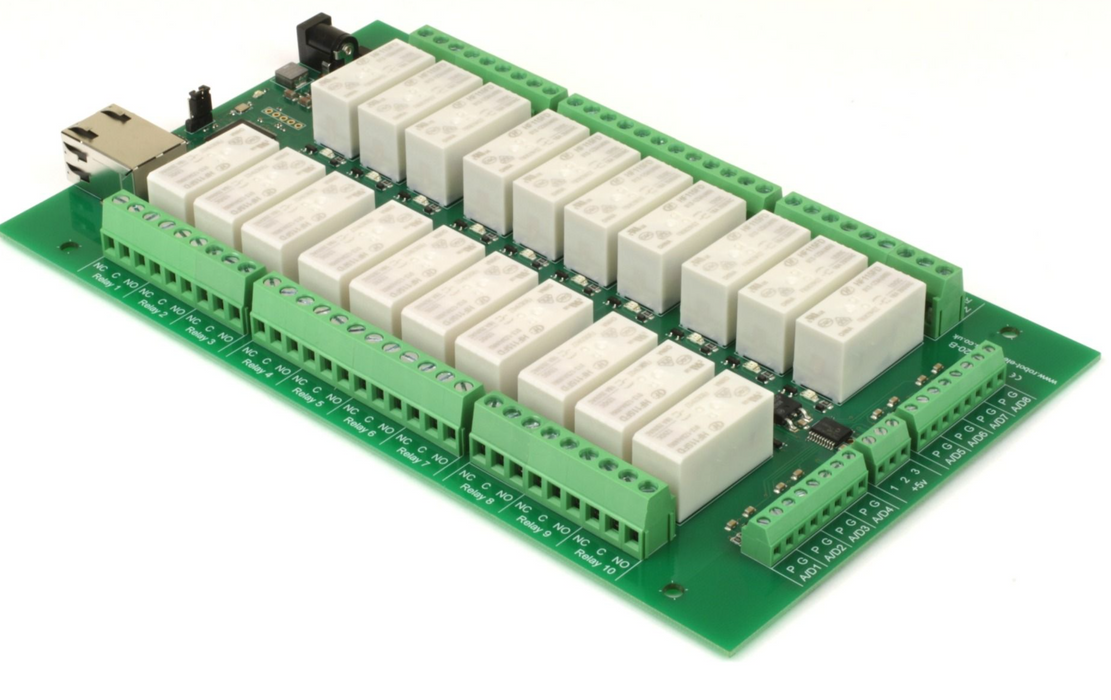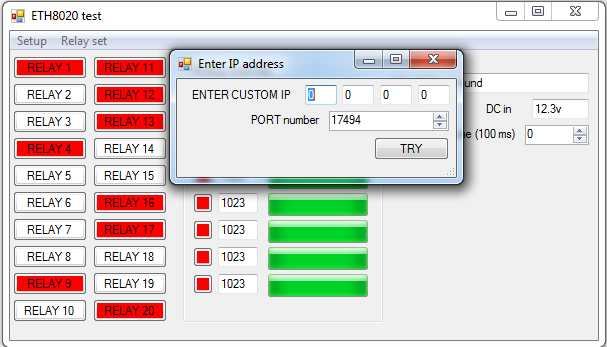
ETH8020-B - 20 x 16A ethernet relay
Tutti i prezzi sono IVA inclusa
The ETH8020-B is a drop in update of the ETH8020 with additional upgrades.
The ETH8020 provides 20 volt free contact relay outputs with a current rating of up to 16Amp each and 8 analogue inputs. The module is powered from a 12vdc supply which can be regulated or unregulated. The DC input jack is 2.1mm with positive core polarity, DC supplies are required to supply at least 1A at 12vdc. The relays are SPCO (Single Pole Change Over) types. The normally open, normally closed and common pins are all available on the screw terminals. The relays on the ETH8020 can be controlled from the inputs on the ETH484 or another ETH8020. This offers the opportunity to construct a system where an input can control an output anywhere on the earth provided both locations are connected to the network/internet.
New features and improvements over the ETH8020 are:
- 100mb full duplex Ethernet connection (ETH8020 was 10mb half duplex)
- Hostname is now configurable
- MQTT with optional TLS encryption
- Email added with optional TLS encryption
Operating temperature
-40C to +70C
LED indication
The ETH8020-B provides a red LED mounted immediately next to each relay to indicate whether it is in a powered state (LED on), there is also two LED's mounted in the Ethernet connector which will flash with Ethernet traffic. Finally there is a green power LED just above the processor.
Java network scanner app, easily find your module even on another subnet - Devantech module finder
Examples:
Java - command line application for controlling the module
Perl - Simple example of setting an output active/inactive by tcp
PHP script - Simple example of setting an output active/inactive by tcp
Python V2 - command line application for controlling the module
Python V3 - command line application for controlling the module
Visual Basic - source code for simple program, includes UDP scan to determine any boards connected to the local network
Visual C# - source code for simple program, includes UDP scan to determine any boards connected to the local network

